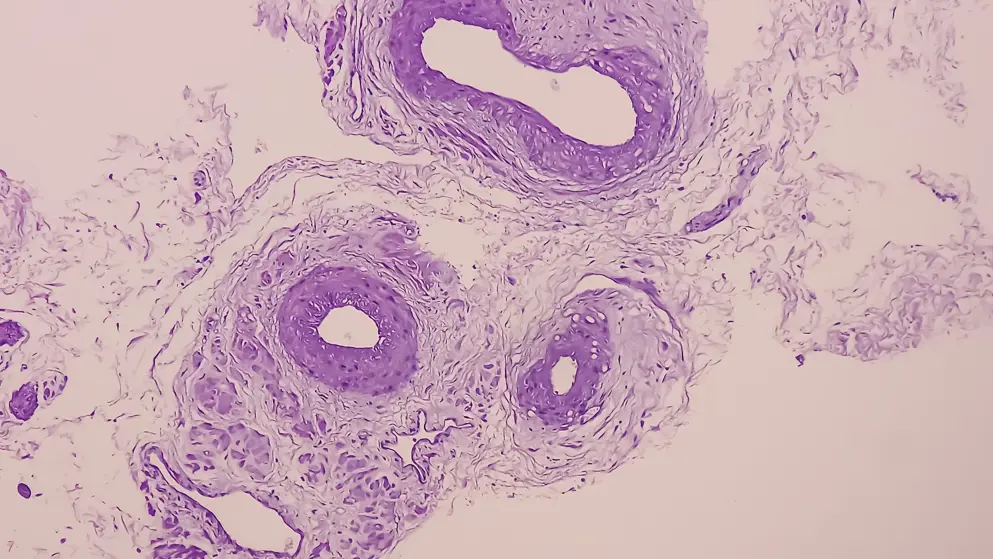
Research round-ups
TALAPRO-2: PROs light path for PARP inhibitor decisions
Patient-reported outcomes (PROs) from TALAPRO-2 may offer some insight into the optimal use of poly (ADP-ribose) polymerase (PARP) inhibitors in patients with metastatic castration-resistant prostate cancer (mCRPC).
As previously reported, the addition of talazoparib to enzalutamide significantly improves radiographic progression-free survival (PFS), irrespective of whether or not participants had homologous recombination repair (HRR) gene alterations.
The latest analyses, reported in two papers in The Lancet Oncology, reveal a similar story for PROs. However, the author of an accompanying commentary, Matthew Cooperberg (University of California, San Francisco, USA), highlights distinctions between the findings in men with HRR mutations and in the all-comers cohort that he believes may help guide treatment selection.
Among 394 participants with HRR mutations, those given talazoparib and enzalutamide had a median time of 27.1 months before definitive deterioration of global health status/quality of life (GHS/QoL), measured with the EORTC Core QoL Questionnaire (QLQ-C30) and prostate cancer-specific urinary symptoms per EORTC QoL Questionnaire-Prostate (QLQ-PR25).
The corresponding time for those given placebo with enzalutamide was just 19.3 months, giving a significant HR of 0.69 (P=0.032), report Andre Fay (Hospital Nora Teixeira, Porto Alegre, Brazil) and team. Likewise, the median times to deterioration for urinary symptoms were non-estimable versus 30.2 months, giving an HR of 0.56 (P=0.022).
Cooperberg notes that talazoparib has a similar magnitude of effect on QoL as on PFS and overall survival, and points out that this should be expected given that “mortality from prostate cancer is nearly universally preceded by functional decline and worsening pain.”
In the 793 participants in the all-comers cohort, reported by Nobuaki Matsubara (National Cancer Center Hospital East, Chiba, Japan) and colleagues, the median time to definitive deterioration in GHS/QoL was also longer for those given talazoparib rather than placebo, at 38.0 months versus 25.0 months, with an HR of 0.78.
However, Cooperberg stresses that this “barely cleared statistical significance,” with a CI of 0.62–0.99 and P=0.038 without adjustment for multiple comparisons. In line with this, the difference in time to deterioration of urinary symptoms was not significantly different between the two groups.
The commentator also highlights that “differences in change from baseline between the treatment groups did not meet the threshold for clinical meaningfulness.”
He says: “Crucially, because outcomes for the HRR wild-type subgroup were not presented, the all-comers benefit appears likely to be driven almost entirely by patients with HRR alterations.”
Cooperberg stresses the “clear evidence” from TALAPRO-2 of the oncological and QoL benefits of PARP inhibition in patients with HRR alterations.
But he concludes: “For patients without such molecular indicators of anticipated benefit, treatment intensification can likely be personalised more productively with other alternatives.”
Preserving quality of life in mCRPC
Want expert tips on supporting wellbeing in people with mCRPC? Hear Stephen Freedland and Axel Merseburger on a whole-patient approach to care.
Barriers to equitable testing
Evidence for the benefits of HRR testing is stacking up, so why aren’t all patients tested in practice? Read about the barriers to optimal care.
TOPARP-B analysis ties reversion mutations to PARPi resistance in mCRPC
Serial circulating tumor DNA (ctDNA) analyses in patients with metastatic castration-resistant prostate cancer (mCRPC) from the TOPARP-B trial support a role for reversion mutations in acquired poly (ADP-ribose) polymerase inhibitor (PARPi) resistance.
Both the TOPARP-B trial and the PROfound trial showed that patients with BRCA2 homozygous deletion had the most durable responses to PARPi treatment. A possible mechanism underlying PARPi resistance may be reversion mutations in genes such as BRCA2 and PALB2, which could restore some homologous recombination repair functionality.
This latest research was conducted by George Seed (The Institute of Cancer Research, London, UK) and colleagues and reported in Cancer Cell. It focused on 19 patients from TOPARP-B who had a confirmed response to PARPi and at least three samples available for analysis, and whose tumors had mutations in BRCA2 or PALB2.
By the end of treatment, 79% of tumors had reversion mutations with the potential to restore function protein, comprising 114 frameshift reversions that restored the native reading frame and 34 stop-gain reversions that removed a stop codon, again restoring the functional reading frame.
There were a median of six reversion mutations per patient, and eight patients concluded treatment with multiple co-existing reversions.
Even an apparent complete homozygous deletion did not always remain that way. When the researchers looked in detail at patients with homozygous BRCA2 deletions, they found that one had rare subclonal wild-type tumor cells present prior to the start of treatment “providing a pool of DNA-repair competent cells selected for by subsequent treatment.”
Notably, the emergence of reversion mutations was linked to early tumor progression, with a significant correlation between the detection rate of reversion mutations and poorer radiographic progression-free survival (rPFS) and overall survival (OS).
Median rPFS was 5.59 months for patients with at least one reversion mutation versus 8.81 months for those with none. The corresponding OS durations were 13.9 versus 21.4 months.
However, some patients had disease progression despite few or no detectable reversions, leading the researchers to suggest that “either very small reverted subclones are vitally important in disease progression, or that alternative mechanisms of olaparib resistance other than reversions play an important clinical role.”
The researchers acknowledge several limitations of their study, including the small number of participants and samples and use of a targeted sequencing panel, which restricted the scope of the analysis.
Understanding resistance mechanisms is crucial for developing next-generation therapeutic strategies and improving patient outcomes.
This research underscores the complexity of PARPi resistance in mCRPC and the potential of ctDNA for real-time monitoring of patients. Continuous research and development of new therapeutic approaches are essential to overcome resistance and enhance patient care.
of interest
are looking at
saved
next event
Developed by EPG Health. This content has been developed independently of the sponsor, Pfizer, which has had no editorial input into the content. EPG Health received funding from the sponsor to help provide healthcare professional members with access to the highest quality medical and scientific information, education and associated relevant content. This content is intended for healthcare professionals only.


